Phys Fat Loss Protocol
The comprehensive strategy & playbook of tactics to shred fat
Who is this Phys dude anyways?
Best to start off with who I’m not: Not training to be a bodybuilder. Not a longevity guru. Not any sort of competitive athlete. Not living in the Tropics advocating you sun your balls during the vernal equinox.
Just someone who shares a common health goal with many of you:
🎯 Attain an elite level of metabolic health with a sufficient amount of lean body mass while maintaining high energy levels & executing my personal mission with peak performance. All of which is set up as a default system running in the background without neurotic tendencies. Because health isn’t the mission - it is the requirement to the mission.
First & foremost, I’m not making any recommendation based on something I have not found personal success with. If it’s here, I found it effective. Full stop.
The goal of the protocol outlined is to thread the needle between reductionism (oversimplifying) & charlatanism (overcomplicating). Consider this the Regular Dude’s Guide to Fat Loss. Something I’ve pieced together over the last 3 months of my health/cut phase. We all live busy lives. Kids. Relationships. Work. Business. The intention is to lay it all out for you to build your own protocol efficiently. Such is the theme on the BTP stack.
If you want some proof of work on how the protocol performed, check out the below post where I break down a recent DEXA scan:
A couple notes & basic principles we need to address before jumping in to the framework:
Fat loss = calorie deficit → In the era of dietary dogma & charlatanism running rampant, we need to address this upfront. I accept the idea we’re capable of manipulating our basal metabolic rate via skeletal muscle gains, food selection, & certain combinations of those foods. However, anyone trying to sell you on fat loss without a calorie deficit is completely full of it. Thermodynamically [redacted] and/or disingenuously grifting. In some cases both.
“Any research compounds used?” → Nope. No exogenous testosterone (no current need as my total test levels have consistently been > 900 ng/dL). No GLP-1 mimetics. No peptides or other compounds. The point here isn't to natty signal - I am all for this level of pioneering research. It's to demonstrate this is a feasible journey for *anyone*. I'm not a genetic aberration. I'm a regular dude who's been seriously training for more than a decade now. Learned from many of the best and from the plethora of stupid personal mistakes. Battled injuries from rucking, tendinitis in knees & elbows from spamming too much volume. Stalled any sort of progress training while intermittent fasting. Bought the worthless supplements. Never implemented proper bulk-cut phases & inefficiently recomp'd for years. You get it. No matter where you're at - it is absolutely doable for you. If I can, you sure as hell can too. And with proper systems development - dare I say it is pretty damn simple.
How to Use This Guide
The system is straightforward & one I’ll continue to emphasize here & on 𝕏 → View your health through the lens of a warfare campaign. This is actually a great mental model to adopt for any pursuit in life, business, & health.
Here’s what I mean by that:
The objective creates the strategy.
The strategy shapes the operations.
The operations dictate the tactics.
While we’ll focus predominantly on the variety of tactics available, I’ll touch on the very basics of how to build our universal objectives & defining YOUR individualized strategy. What’s yours is yours. What’s mine is mine.
You won't agree on all, but the intention is to go beyond the basic advice tied to cutting. Couldn't care less what the AI says or what worked for others. We need to move beyond the “muh willpower” or “eat less & move more” or more caffeine/fat burners. These aren't the foundations of a strong system. These are tactics of a weak plan destined to fail.
Objective
The high level goal is pretty much universal across time & space for any fat loss program:
🎯 Reduce body fat and improve metabolic health markers while maintaining skeletal muscle mass, cardiorespiratory fitness, & overall strength.
About as generic as a fat loss plan can be stated and varies little across most of us here. Where the personalization of your own protocol begins is in the strategic system we’ll be building next.
Strategy
Consider this as a general blueprint to determining your energy balance. No mattere where we’re at in the game of health, it all comes back to energy. There are hundreds of books written on the strategy portion we’ll cover, however we’ve cut the fat (*winks*) to deliver the bottom line.
First recommendation is to download a nutrition/biomarker tracking app like Cronometer to make your life exponentially simpler.
Just input your own measures & you’re off:
Step #1: Determine Your Maintenance Calories
Initialization → Use a TDEE calculator like the one here (LINK) to determine a rough estimate on maintenance total daily energy expenditure
Preferred Method:
Use the above calculator to estimate TDEE.

Record your personal caloric intake for 7 days.
Weigh yourself at a consistent time daily (Ideal: upon waking & after using the bathroom)
If your weight is stable - your average daily intake is your maintenance.
If 1 lb gain in 1 week, then adjust maintenance as -500 cal/day.
If 1 lb loss in 1 week, then adjust maintenance as +500 cal/day.
Step #2: Determine Your Required Daily Deficit
Set your goal weight & timeline.
Choose a rate of loss.
Preferred rate = 0.5 - 1.5 lb/week (1 lb is the sweet spot & 1.5 lb is aggressive)
Calculate overall deficit needed.
1 lb fat = 3,500 calories
Example: 20 lb loss x 3,500 cal = 70k cal deficit overall
Calculate daily deficit.
-0.5 lb/week = 250 cal/day
-1.0 lb /week = 500 cal/day
Step #3: Determine Daily Target Calories
Subtract the daily deficit from maintenance.
Maintenance calories - daily deficit = daily calorie target
Example: 2,800 cal (maintenance) - 500 cal (deficit) = 2,300 cal/day
Step #4: Determine Protein Intake
Set protein target.
Preferred target = 1.0 - 1.2 g/lb of bodyweight.
Calculate calories from protein.
Protein = 4 cal/gram
Example: 180 lb male x 1.2 = 216 grams (864 cal) protein daily
Step #5: Determine Collective Carb & Fat Calories
Subtract protein calories from total calories.
Total daily calories – protein calories = calories left for carbs and fats
Example: 2,300 cal (total) - 864 (protein) = 1,436 cal for carbs & fat
Step #6: Choose Carb & Fat Distribution
We’ll implement a carb cycling *tactic* later on so this will vary day to day.
Example: Carb/Fat split of 60%/40%
Carb → 1,436 x 0.6 = 862 cal
Fat → 1,436 x 0.4 = 574 cal
“Phys, can’t you just summarize this all into a nice, clean table for us?”
Yes.
Now that we’ve personalized our fat loss targets. It’s time to step into how we conduct day-to-day operations.
Tactics
In the pursuit of any fat loss protocol, foundations remain king.
“In a practical sense, what’s meant by foundations?”
We won’t go into depth on those here → already broken down:
Now we push into the specific tactics. In our framework, think granular habits & micro-habits. Some will be familiar ones you’ve already implemented. Others entirely new & just the nudge to get you past the finish line more smoothly on your next cut/diet phase.
Broken down into broad categories:
Nutrition
Training
Environment
Supplementation
Regardless of where these fall for you, you know the rules: Take what fits. Leave what doesn’t.
Nutrition
Tactic #1: Get a food scale
First & most crucial point of the nutrition game when we’re dieting down. This is a psychological state preservation hack more than anything.
Much of the US has subconsciously subscribed to a misunderstanding of portion sizes. Classic example is the spoonful of peanut butter.
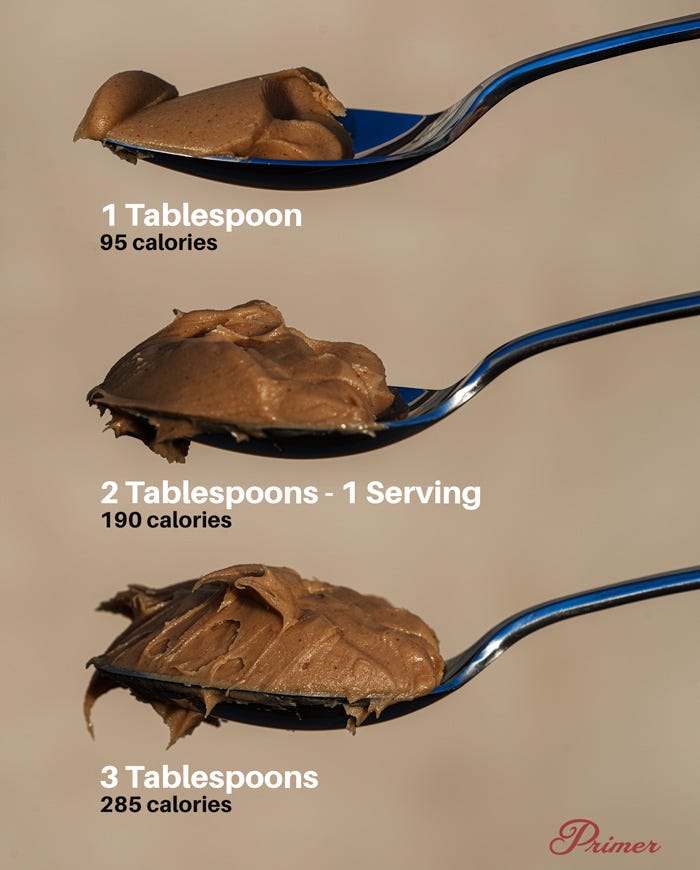
Of course it extends far beyond that. If you want to avoid spinning your wheels, get it right from the start. Soon enough, you'll be able to eye ball (however I don't recommend this approach especially if it's your first cut & at the beginning of any dieting period.)
Tons of them out there on Amazon. But I've been using this one from Etekcity for years (LINK).
✔️ Cheap (~$10)
✔️ Durable
✔️ Simple to use
Tactic #2: Embrace carb cycling/metabolic priming
Any fat loss plan without the implementation of carb cycling is life on expert level difficulty. All this means is us alternating between low-carb & high-carb days to fuel glycogen stores for intense training sessions & deplete those stores, plus turn on fat oxidation during less intense sessions/low-intensity cardio/rest days. It’s the preferred method of our carb intake for a few reasons:
Keeps intensity high during resistance training sessions (glycogen replenishment)
Improves metabolic flexibility (low-carb days flip on the fat burning switch)
Enhances leptin & insulin sensitivity
Reduces risk of metabolic slowing (high-carb days maintain resting metabolic rate)
Lot of different ways to execute this while staying in your required weekly deficit. But here's a simple example of how I implement a week-long cycle as a tactic:
Goes synergistically with carb cycling but takes it a step further to optimize mitochondrial function & overall metabolic health.
Tactic #3: Limit food diversity
Mitigating choices reduces the amount of self-negotiation you're doing. The less you have to negotiate, the more successful you’ll be long-term. We’re back to robust systems building 101.
Bookmark this as the grocery guide for your nutrition moving forward:
Create a meal prep plan that works for you & integrates well with your family:
Set out at the forefront of the cut period what 90%+ of the foods will comprise your diet.
Shop for a few in each category each week.
Designate one day out of the week to meal prep 1 protein, 1 carb, & 1 vegetable.
Stay consistent.
Tactic #4: Consume low-density/high volume foods
Dieting phases become a game of satiety management. One way to properly hack our neurohormonal signaling (especially at the outset of any fat loss protocol) is via high-volume/low-density foods.

When we enter a deficit, leptin - our satiety hormone - drops proportionately with fat loss (setpoint theory/adaptive thermogenesis) triggering hunger-promoting neurons in the brain. High-volume foods counteract this through the elevation of endogenous GLP-1 release enhancing how well our brain responds to whatever leptin you still have circulating. Thus, we begin to sensitize our leptin signaling - a pillar of elite metabolic condition.
Tactic #5: Implement well-timed extended fasting periods
Fasting is more muscle-preserving than a consistent state of caloric restriction - “nothing is better than something”. And it’s just about the most efficient way to torch 3,500 cal worth of fat (~1 lb).
Fast periods of 36 - 48 hrs leverage our evolved mechanisms for energy mobilization & muscle preservation. These conditions provide a metabolic environment favoring us tapping into fat stores while maintaining lean body mass. The acute hormonal adaptations like increases in growth hormone/catecholamines and drops in insulin are what enable fasting periods to be more muscle-sparing than a hormonal milieu of steady caloric restriction. We also get another huge win from an extended fast: improved insulin sensitivity post-fast enhances nutrient partitioning.
A couple micro-tactics to employ:
Don’t fast in the house → You're playing this on expert mode with food availability in the fridge & pantry. Schedule these for times you'll be doing things out of the house. Heading to kids' baseball games. Tons of chores to get done. Lower the barrier of entry to cave to the vices.
Use in conjunction with low/moderate intensity cardio training days → Avoid implementing on or near high intensity training days.
Deeper you go, tougher it gets. Plan accordingly.
Tactic #6: Find personalized antidotes to your bored mouth disease
I’ll never be a “muh willpower” guy. Nor will I ever have the expectation of others to succeed with mere discipline. A fundamental truth of the human condition: we fall to the level of our systems.
One of my theories as to why Asian countries have such a low obesity rate is partially due to the connection of culture, language, & feelings as they relate to the body.
Kuchisabishii - a word meaning “lonely mouth” in Japanese (4.3% obesity rate).
Ipe si simsimhada - a phrase literally translated to “my mouth is bored” in Korean (4.7% obesity rate).
It’s reminiscent of the idea I repeatedly ask myself: “Are you hungry? Or you just bored?” Start pressing yourself with this line of questioning and you’ll find yourself answering the latter more often than not.
Some low-cost, healthy tools I use to address the boredom:
Zellie’s Xylitol Gum → Xylitol-based, sugar free gum. Variety of flavors available: Cherry Berry, Fresh Fruit, Peppermint, Spearmint, & Cinnamon.
Gimme Seaweed → Made with avocado oil. Light at only 25 calories. Strong source of iodine & Vitamin B12. Tick the salt craving box.
Spry Mints → Another clean xylitol-based oral health tool.
Zevia → A superior alternative to typical diet sodas. Stevia-sweetened. Little higher cost than a typical diet beverage but without the artificial sweeteners like sucralose or aspartame. Wide-range of flavors: Root Beer, Cream Soda, Black Cherry Cola, Ginger Beer.
SweetLeaf Sweet Drops → Another Stevia-based sweetener ideal for coffee, smoothies, or low-calorie baking options. Variety of flavors: Caramel, Chocolate, Coconut, & Vanilla.
YUHO Konjac Noodles → A personal favorite dieting hack that flies under the radar. 5 cal/serving. Pair with your favorite condiment & a protein source. Easy to prepare. Highly satiable snack.
Cauliflower Rice → Another high fiber staple similar to konjac noodles. Tons of brands available. Ideal substitute where you’d otherwise be consuming rice.
Tactic #7: Segment carb & fat heavy meals
One of the main objectives of any successful fat loss period is to improve our metabolic health. We’re cutting fat to sensitize leptin & insulin signaling while optimizing our metabolic flexibility. Or in other words enhancing our ability to flip the metabolic switch from one fuel substrate to another (fats & carbs). This ensures when we enter a muscle gain phase, our body has a greater likelihood to build lean mass than store adipose tissue.
A method to further amplify those effects is through the separation of high carb/high fat meals.
Constant mixed fuel availability, particularly when combined with today’s chronically unnatural light environments, is a fast track to mitochondrial confusion.
When substrate competition is reduced, metabolic flexibility improves. The method I've seen the greatest personal benefit from: 1) high carb mornings/around training time and 2) high fat meals away from training windows/on LISS & rest days.
What I’ve noticed over time from this tactic:
Satiety signaling improves
Energy levels remain steady (especially in afternoon)
Training quality enhances
Fewer hunger cravings at night
Glycemic response more regulated
Fasting periods become easier
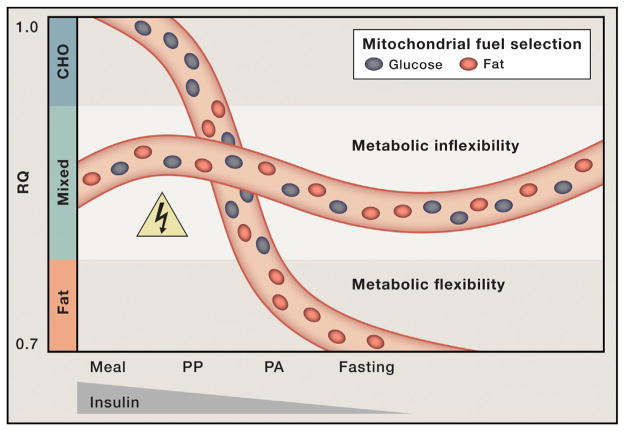
This principle (more formally known as the Randle cycle) also serves as a high synergy tactic with carb cycling. Final note here: don’t go neurotic with this one. Hitting your macronutrient/micronutrient goals is far more critical than timing of those components. A tactic worth testing if we’ve got everything else dialed in.
Training
Tactic #8: Reduce HIIT volume
*Note: This is relative to your existing training & assuming you’re executing HIIT at least 1x/week.
Maximal oxygen capacity is a lot like skeletal muscle tissue - use it or lose it. This doesn't mean I'm not doing it at all. I simply scale back into a maintenance mode from a typical 1-2x/week to 1x/2 weeks. I've found this to be the Goldilocks' Zone of VO2 max maintenance. It doesn't take much time. But the concentration of pain within those 5-10 min - particularly in glycogen depleted states - will make them consistently the worst few minutes of your week.
Tactic #9: Increase fasted LISS & MICT
This ties right into our previous tactic. We're not just reducing HIIT volume. We're replacing it with reduced intensity forms of cardio - low-intensity steady state (LISS) & moderate-intensity continuous training (MICT).
And here's why: Our preferred method of fat loss is via an increase in expenditure. Now, that's simply not feasible as the sole method nor is it time efficient to hold intake constant (or even close to maintenance) while increasing the expenditure lever. When we engage in cardio, what kind of fuel we're using depends on where we sit in terms of heart rate and the amount of oxygen being recruited by the cells.
Here’s how that fuel substrate corresponds to intensity:

< 60 % → fatty acids from adipose tissue + intramuscular triglycerides
60% - 75% → mix of carb + fat oxidation (**max rate for fat loss ~65%**)
> 75% → muscle glycogen + phosphocreatine
When we get down into the low/moderate intensity zones, that metabolic switch flips to fat oxidation. And therefore, we tap into fat stores (especially during fasted cardio sessions) via lipid oxidation - fat burning mode.

Another reason I love fasted steady state cardio regardless of bulk, cut, or maintenance phase I'm in. It also increases blood flow, delivers nutrients to your muscles, & doesn't deplete the energy stores you need for lifting.
Stay within Z2/Z3 for more efficient fat oxidation.
Tactic #10: Lower resistance training volume
If dieting down had a simple requirement of getting into a caloric deficit, it wouldn’t be so brutal at times. The hard part is holding onto your strength while being in a deficit. That’s the real fight.
Cutting weight is never a reason to eliminate resistance training. There are still some who buy the logic of "since we're not in a caloric surplus, we can take the pack off since we're not going to be building skeletal muscle mass."
Nope - while it's true we're not adding muscle mass during a cut (we need to be in a surplus to do so), the objective of our resistance training protocol at this time is simple: fight like hell to keep the logbook steady. Making every rep count. Sounds much easier than it is to execute. But maintenance of strength is the goal. And the preferred path to do so is through the slight decrease in weekly volume.
As far as lowering the volume, I prefer to train in the low rep range of 6-10 for the first set, then for a second set back off into the higher rep range of 12-16. The relatively low rep range is crucial for us so that when it's time to start our building phase again, our motor neurons “remember” the heavy loads. An additional micro-tactic I used when lifting with a partner this round of cutting was a rest-pause set with slow negatives at the end of an exercise: 1) Complete final set, 2) Pause 15 - 20 sec, 3) Leverage partner to support concentric part of the movement, & 4) Execute as many slow negatives on eccentric until failure.
Tactic #11: Increase postprandial expenditure
The beginning of a diet phase is my personal cue to start moving more overall, but especially post-mealtime.
If you're serious about metabolic health, you need to be moving immediately after meals to improve digestion & our overall glycemic response.

If there's a time to increase the low intensity expenditure, it's preferably while digesting. Making this a habit provides a signal to send glucose to the cell rather than being stored as fat. And we get a slew of metabolic benefits:
✔️ Improves the glycemic response (especially on our refeed days) → shuttles glucose to muscles & liver → tap into as a fuel source for either RT/HIIT sessions
✔️ Enhances leptin & insulin sensitivities
✔️ Improves digestion → better GI motility & gastric emptying
✔️ Provides the added bonus of natural light exposure to support improved glycemic regulation
"What if I can't walk after meals?"
Do multiple sets of push-ups, squats, & lunges.

"What if I can't do bodyweight exercises?"
Literally just stand for 30 min.

Walk > BW exercises > Stand >> Sit
Environment
Tactic #12: Clean your kitchen & pantry environments
The most difficult component of any cut is the uphill neurohormonal battle. It’s why the “eat less, move more” logic isn’t effective long-term.
“Alright so what’s the solution?”
The more friction you place between you & any vice - the lower the likelihood you'll engage with that vice. This goes for any habit formation. But rings especially true in the easily accessible, dopamine-abundant environments we operate in today.
Let's tier out a simple environmental stimuli mitigation method:
Level 1: Readily available & out in the open pantry/fridge
Level 2: Readily available but hidden
Level 3: Not present in the pantry
It’s not ground-breaking, but 2021 research across ~5k adults found that greater availability increased the odds of overweight/obesity. Conversely, they also found a more diverse fruit/vegetable selection decreased the odds of overweight/obesity.
Systems remain king.
Tactic #13: Leverage the Hawthorne effect
“Hawthorne effect?”

This may mean an actual coach. Could be as simple as your most trusted friend. But the underlying theme here is accountability. I do this for many. You want the feeling of being under a microscope. Like someone is watching you. You're checking in with them because they're serving as a trusted confidant. Find this person. And if they truly care about your long-term health, they'll be more than willing to do this for you.
What I have them to do is simple for fat loss/health periods. Send me four things at the end of each day:
Your food log
Your step count
Your sleep - wake times
Your logbook
And as far as actual effectiveness, the order of these aligns with the hierarchical importance as well from longest lever to shortest. Although, all critical.
Tactic #14: Use electrolytes & nootropic combinations
The traditional insight is to spam tons of caffeine to fend off hunger & call it a day. However, we don't want to get to the tail end of a cut totally desensitized to caffeine so let’s be more strategic about our hunger suppression tools.
These are best employed by first understanding when your hunger cues strike. If you maintain a consistent eating window, you'll find your hunger spikes occurring around the same times daily. To max leverage out of the nootropic/electrolyte based hunger suppression tactic, shoot for 15-20 min before the spike typically hits.
Tons of different low-calorie electrolyte powders out there but a few I’ve been cycling through this past year:
As far as nootropics go, there are entire accounts/newsletters dedicated to optimizing cognition & focus. No need to overcomplicate this area here. But first, why nootropics for fat loss?
Simple mechanism: Queue up heavy cognitive load → enhance level of focus with compounds → dial in a deep work session → alleviate hunger cues
Employ what works for you. Test out new compounds at small dosages & incrementally increase. A few staples I keep on hand:
L-Theanine w/ Inositol
Phys Brand Pick: NOW Foods
Dosage: 400 - 800 mg
Lion’s Mane
Phys Brand Pick: Real Mushrooms
Dosage: 2,000 - 3,000 mg
4'-DMA-7,8-DHF
Phys Brand Pick: Nootropics Depot
Dosage: 20 - 30 mg
Alpha-GPC
Phys Brand Pick: NOW Foods
Dosage: 1,200 - 1,800 mg
L-Tyrosine
Phys Brand Pick: NOW Foods
Dosage: 1,000 - 1,500 mg
Bacopa Monnieri
Phys Brand Pick: Pure Encapsulations
Dosage: 400 - 600 mg
Tactic #15: Stop consuming food in front of screens
Our digestive system starts working the moment we see, smell, or even think about food. This initial stage of pre-digestion called the cephalic phase is our body's way of preparing for incoming nutrients.
When we consume food while engaged with screens, our attention is diverted away from the full sensory experience of the food itself. The distraction thus impairs our ability to register satiety signals & regulate our caloric intake properly.
A meta-analysis published in February 2025 across 23 experimental trials & nearly 1,900 subjects found adults watching screens during meal times significantly increased food intake (p = 0.01).
Break bread with those you love, not screens you watch.
Supplementation
Proper implementation & synergy of other tactics outlined above are the big needle movers for us. But with smart usage of some supplements, we can further advance our metabolic health while dieting. Just don’t waste your time, effort, & coin trying to out-supplement a poor nutrition strategy. At best, this is 5% of the game. Treat it as such.
Here are the consistent staples I stuck with shown by overwhelming personal benefits I’ve seen via bloodwork & body composition improvements:
Supplement #1: Nattokinase
Complete guide to nattokinase:
Supplement #2: EPA/DHA (Omega-3)
Dosage: 1,500 mg EPA & 500 mg DHA w/ meal
Brand: Viva Naturals Omega 3 Fish Oil (EPA-to-DHA ratio = ~3:1)
Additional note: If you’re going to explore this market further, ensure it is high quality by verifying its status as an IFOS-verified product.
Supplement #3: Berberine
Complete guide to berberine:
Supplement #4: Methylated B-complex
Brand: Pure Encapsulations B-Complex Plus
Supplement #5: Taurine
Complete guide to berberine:
Supplement #6: Magnesium
Complete guide to magnesium:
Supplement #7: Psyllium Husk
Dosage: 2 tsp prior to high-carb meals
Brand: Viva Naturals Organic Psyllium Husk Powder
That’s a wrap for the protocol. We’ll be making some edits to this over the long term as we test out new methods & tactics.
For now - reframe the world as your sandbox & build the system that works for you. Stay after it.
Your friend,
BTP
***Disclaimer: The information provided by BowTiedPhys is for educational purposes only. This content is not intended to be a substitute for professional medical advice, diagnosis, or treatment of any kind. BowTiedPhys is not a licensed medical provider. Prior to making any changes to your health protocols, consult a licensed healthcare professional. Some of the links in this post may be affiliate links - BowTiedPhys may earn a commission at no additional cost to you. This commission helps support our work and allows us to continue providing valuable content to our valued subscription members.***








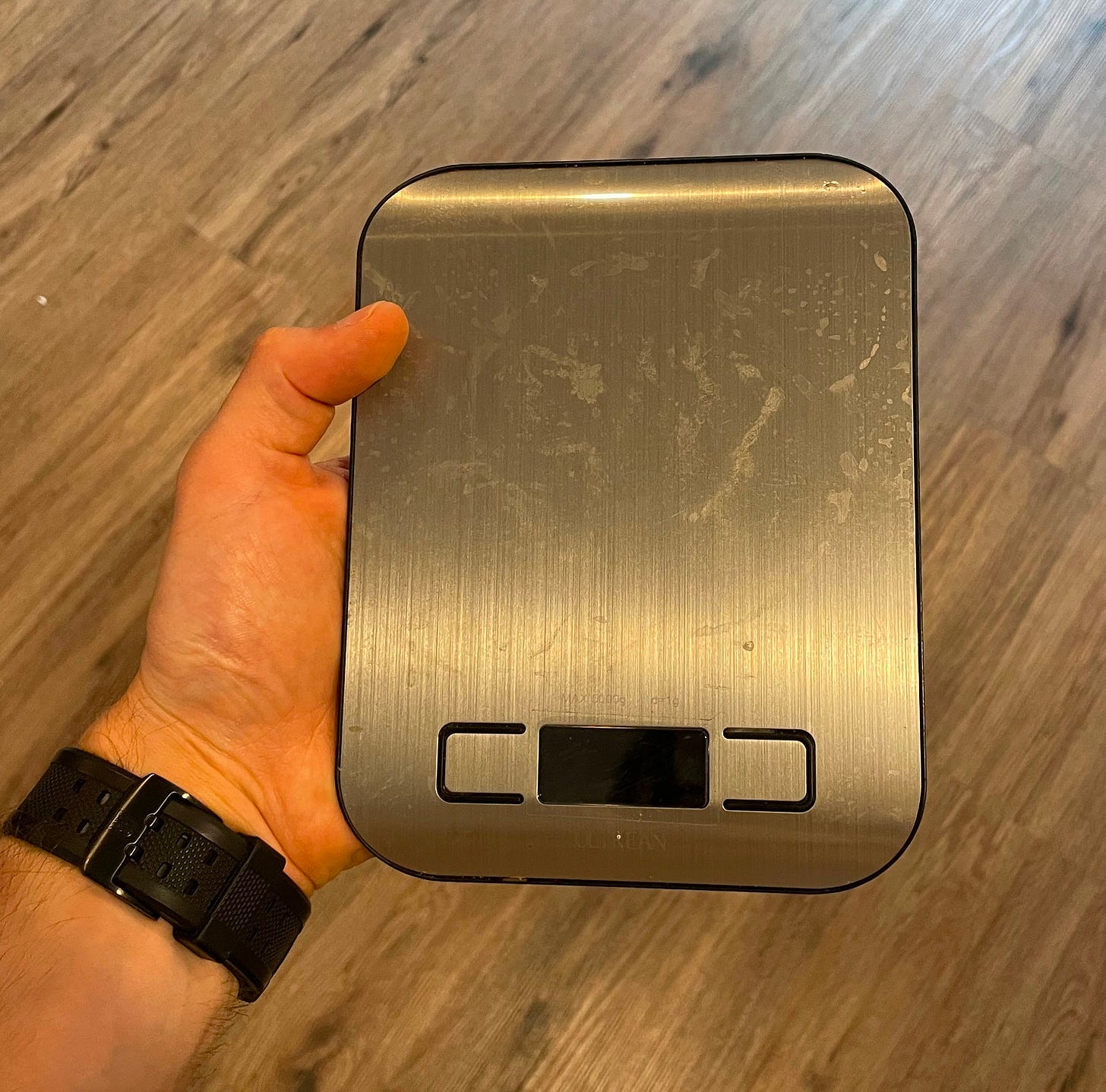


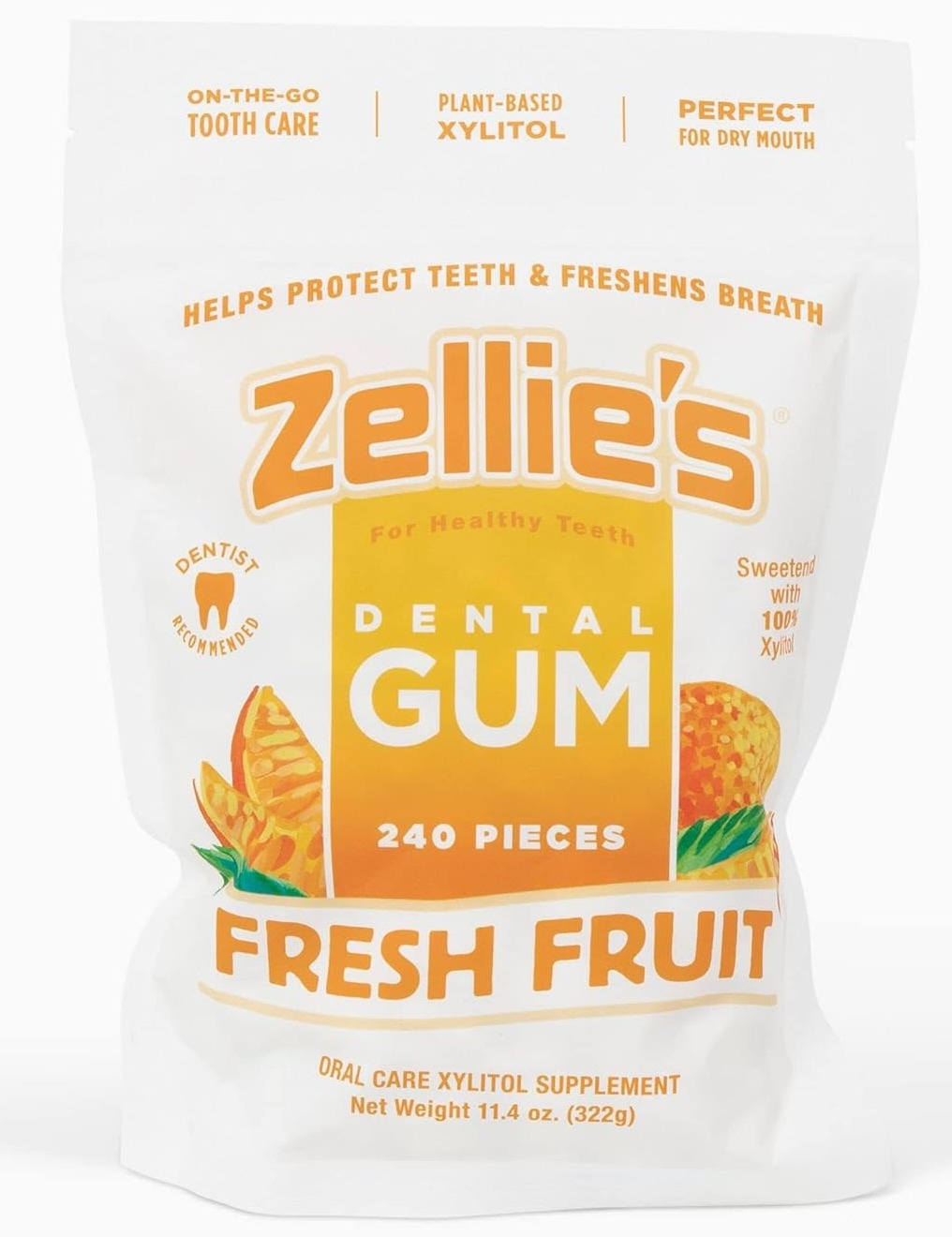

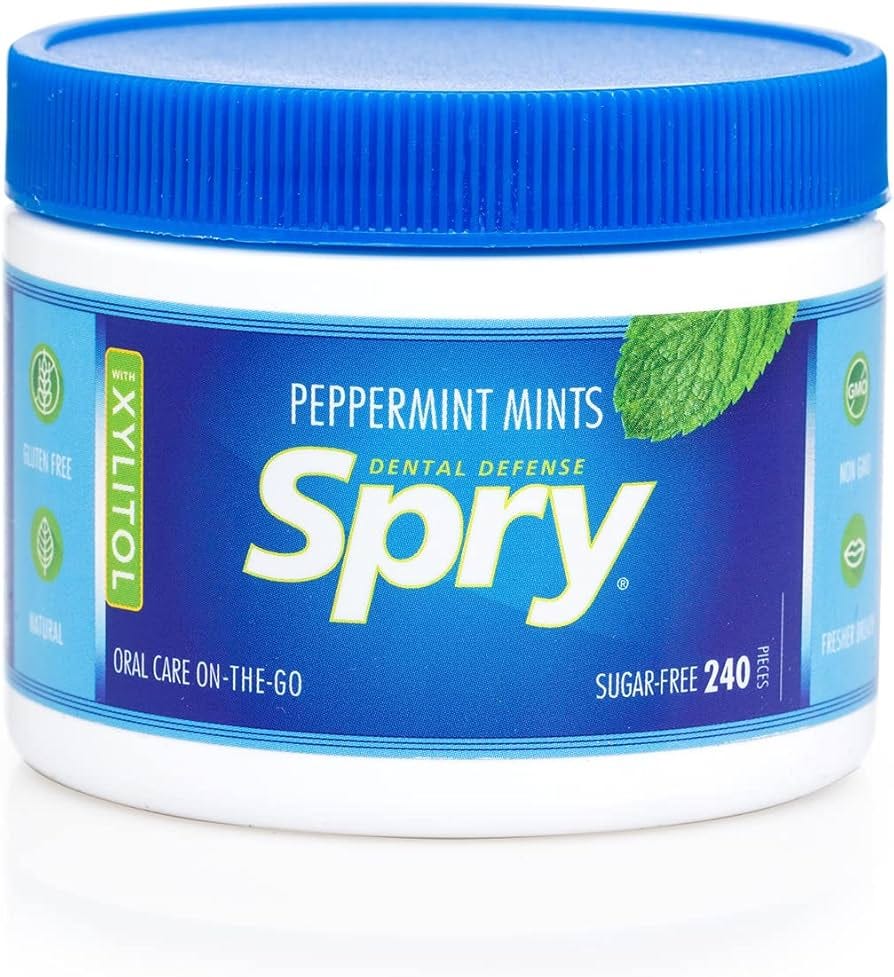

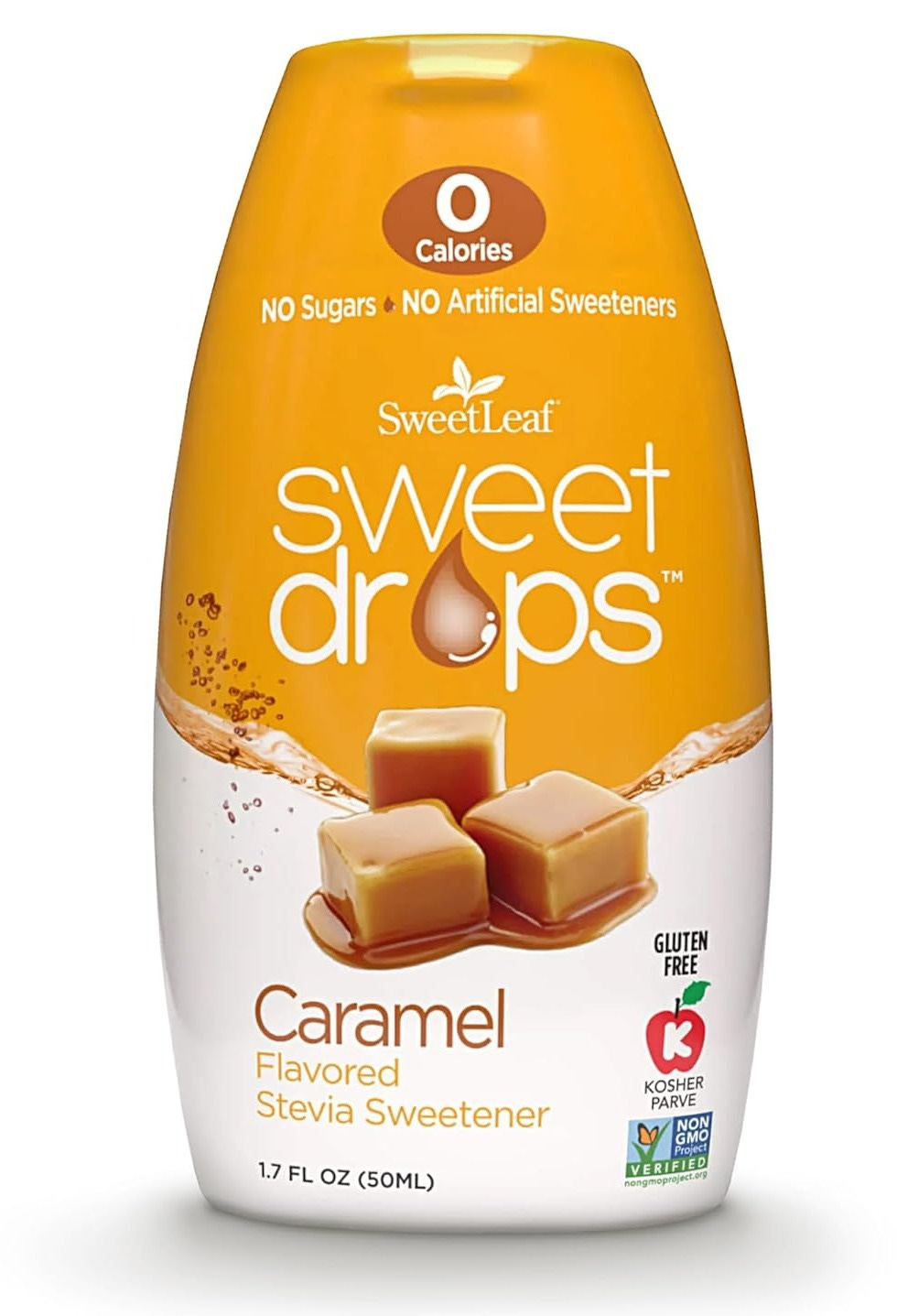
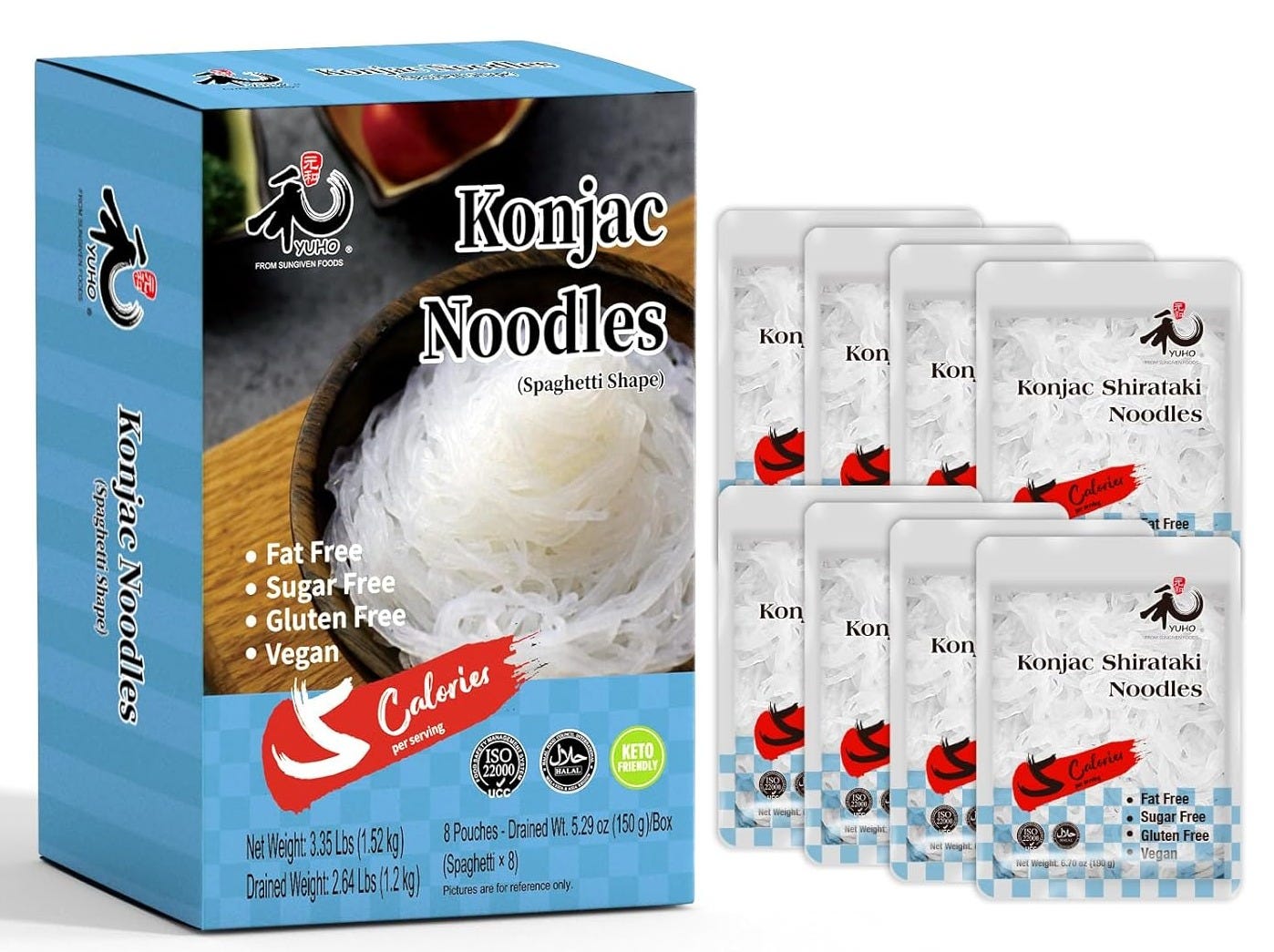
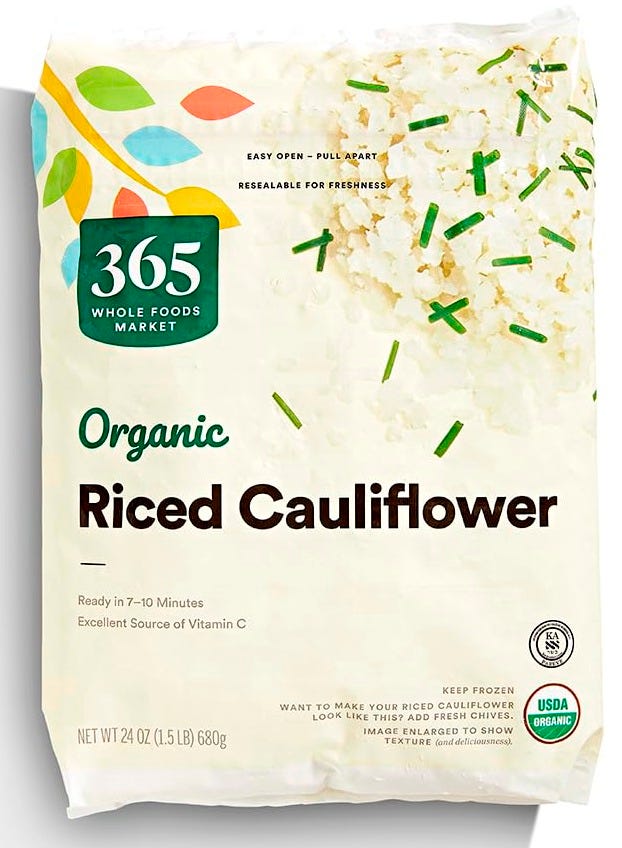






This is the best guide ive seen on the subject. Bravo!
Hey BTP- on carb cycling, if i workout first thing in the AM and am running a Push, Pull, Rest Day, Legs, Rest Day schedule when do you recommend the high and low carb days here?
Would ideally put high carb day around leg workout just not sure if it would work better on leg day or the rest day prior given the early morning workout.